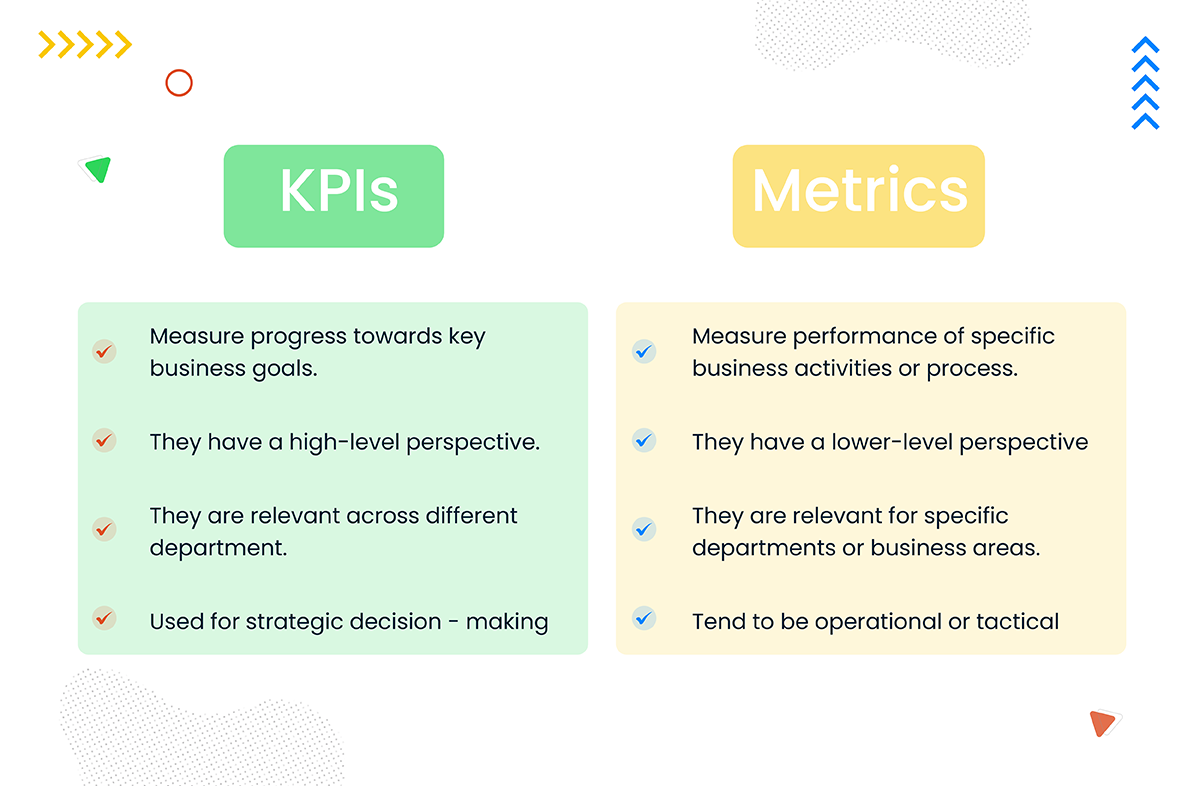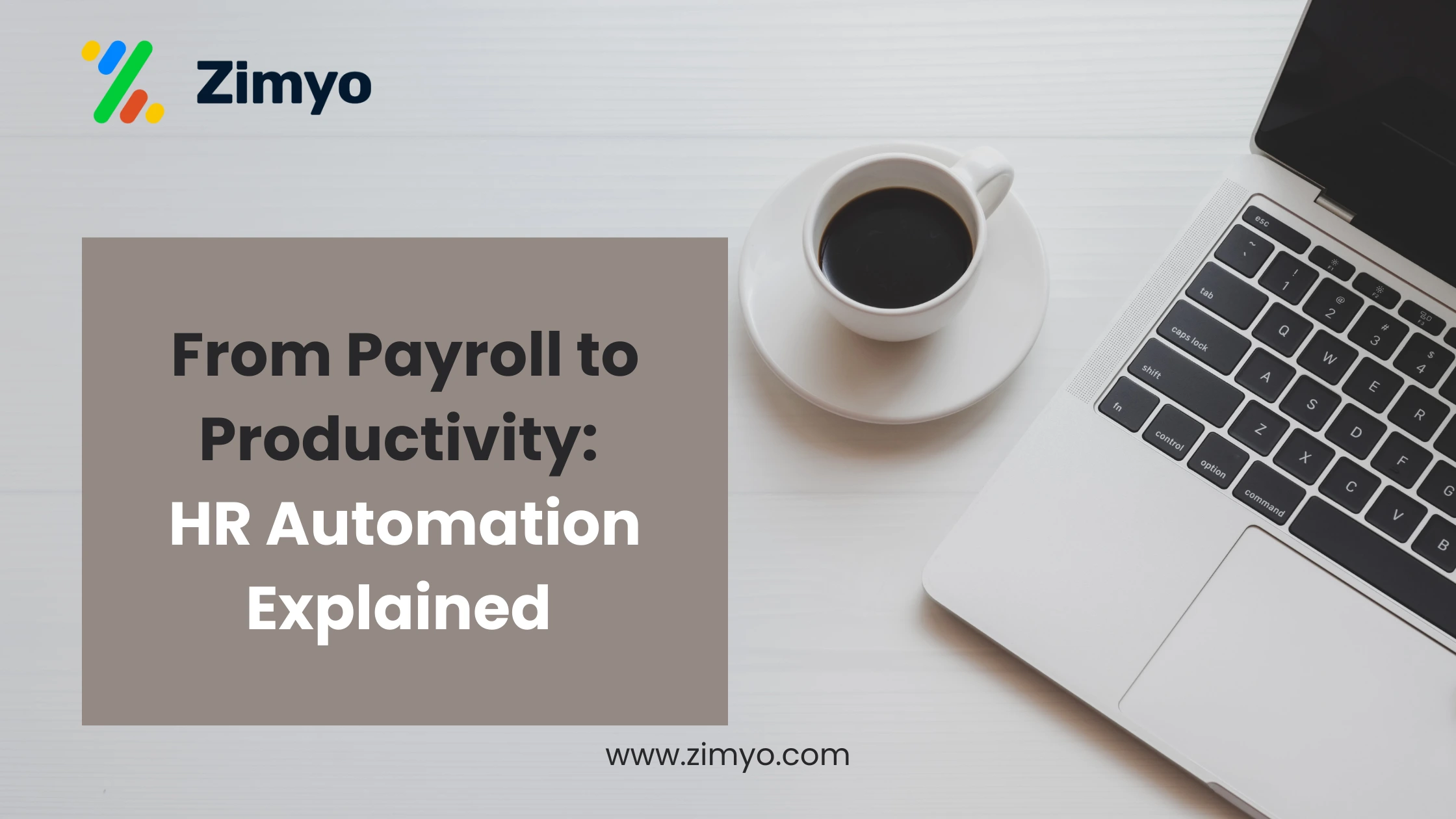Performance metrics track and provide insights to HRs, managers, leaders, and even employees about their job performance. The HR metrics track an employee’s contribution and performance for an organization. Employee performance is vital for achieving company goals. The metrics can be measurable data points like productivity, time management, quality of work, and more.
Through set parameters, businesses track data to derive conclusions depending upon the achievement of overall business goals by an individual.
However, simply knowing what performance metrics are won’t solve problems. Modern workplaces focus on the premise that how quantifiable is the value of employees. Metrics encourage an output-driven culture.
Let’s understand the key performance metrics and how they benefit every business.
Benefits of Tracking Performance Metrics
To properly track, evaluate and analyze an employee’s performance, it is crucial to implement key performance metrics. When employees successfully achieve performance targets, the business’s overall health improves automatically. Also, if employees fail to meet the expected outcomes, the collected information offers insights to business leaders that help them design solid performance improvement strategies.
In modern organizations, business performance metrics and employee performance metrics go hand in hand. Business Metric is a quantifiable measure that tracks and assesses the status of a specific business process. Identifying business performance metrics is impossible if you don’t spend time understanding the performance of employees at work.
Moreover, performance review metrics allow the HR team to identify how team members perform and are trackable through HR software to support the team adequately.
A business can benefit from employee performance metrics in various ways. The following are the most common benefits of adapting efficient performance metrics –
Performance Metrics vs KPI – Understanding the Difference
Metrics and KPIs are often confused, but there is a clear difference.
Key Performance Indicators (KPIs) focus on critical performance areas. KPIs are the essential measures that greatly influence the progress of an organization. They comprehensively articulate and provide insight into the organization’s required indicators to measure and achieve to reach its long-term objectives. Great strategic plans have 5-7 different Key Performance Indicators that keep the pulse on employees or businesses performing against the project.
Metrics are effective when compared to defined objectives and established benchmarks. It enables employees to act better on the data they’re viewing. Metrics look at the performance of specific processes usually owned by an employee, a department, or a team. Metrics are tactical because they provide a view of the activities that help achieve the organization’s KPI.
It’s easy to use the two concepts interchangeably, but here is an intelligent approach to think about it—key Performance Indicators aid organizations in defining strategy and clear focus. Metrics are measures that add value to your organization but aren’t the critical measure you need to achieve. Every KPI is a metric, but not every metric is a KPI.
In short, performance metrics track all sides of an employee or a business, whereas KPIs target a critical part of the performance.
8 Key Performance Metrics for Employee Assessment
No one wants to miss out on a promotion or a possible pay raise. However, the essence of conducting performance reviews often goes beyond just hikes and pay increases. A good performance review should evaluate employee performance and workflow. However, without first setting relevant performance metrics, HR managers really can’t even measure anything in the first place. The subjective nature of businesses today can make it difficult to establish clearly defined workforce metrics. A company may have remote employees whose contributions can’t be directly observed or staff involved in activities that cannot be easily quantified. Additionally, organizations must promote creativity and innovation to stay competitive in a technology-driven environment. This is why defining employee metrics becomes increasingly tricky.
Also Read: Modern Methods & Types of Performance Appraisal
An ideal approach is to identify the essential employee performance metrics to apply a goal-based methodology and combine these with work metrics that encourage proactive creativity, innovation, and problem-solving to create a winning combination. While an extensive focus on metrics can be detrimental to your employees, so we’ve listed down 8 key performance metrics that can help you guide your people management strategies in the right direction –
 Work Quality
Work Quality
Quality over quantity sounds like a cliché, but quality trumps quantity, especially when considering employee productivity. This metric helps organizations understand how many hours an employee spends at work or how many tasks they complete to add value to their product or service. Work quality is the critical component of most organizations’ employee performance review metrics. However, quality should be measured according to an employee’s job duties.
 Time Management & Employee Efficiency
Time Management & Employee Efficiency
Unreasonable deadlines can encourage lackluster performance and corner-cutting, whereas reasonable deadlines that consider employee workloads and capabilities can improve work quality and employee engagement at the workplace. An efficient employee may optimize their productivity with minimum effort and expense. Therefore, actual productivity can only be achieved by balancing quality work and time management. The productivity of employees will directly impact the growth of your organization.
 Training
Training
The willingness to participate in new training programs is a critical performance metric. The return on investment of these development opportunities can be used to argue for their success. Sometimes, training for the sake of it is not a wise use of company resources. Learning and development programs are essential in assisting employees in growing professionally, reaching peak performance, and improving their job satisfaction. Today, millennials constitute the largest generation in the modern workforce, and their influence is changing how companies approach training programs. More and more millennial workers have an appetite for learning and growing professionally, and companies need to adapt to their learning and development strategies to attract and retain top talent.
 Teamwork
Teamwork
Teamwork is a key performance metric in today’s modern organizations. It is vital to foster a culture of teamwork as it helps the team perform better when approaching a complex problem and solving it as a group. It is essential to understand that teamwork is not a quantitative but a qualitative metric. Therefore, HR managers should observe these traits in an employee as it is one trait that often goes unnoticed. The teamwork of an employee reflects in reaching out to other teams to offer assistance, signing up for challenging projects, brainstorming with a co-worker of another group that they are not even a part of, and taking time out of routine duties to mentor or explain complex tasks to other teams.
 New Initiatives
New Initiatives
The willingness of employees to be creative and take on new initiatives is an important indicator. This helps to measure employees’ passion for their work. Seeing what interests them may also help you determine if their career progression is on the right track for your organization.
 Effectiveness
Effectiveness
Effectiveness is an employee performance metric focussed on assessing the employees’ ability to solve work-related challenges. It also factors innovative solutions that help them complete their task faster and more efficiently. Improved effectiveness often automatically translates to high-quality products or services and increased customer satisfaction.
It is possible to measure the effectiveness of staff members using many different sub-metrics. The effectiveness of employees mainly depends on their role in the company.
 Innovation
Innovation
It is crucial to mention how innovative the organization’s workforce is and how willing it is to go out of its way to meet deadlines and overcome challenges. This is an essential metric for employee performance review because it will eventually reflect on the results and productivity of the company. HR should identify innovative initiatives and introduce these into business processes to positively impact productivity. It is important to reward and encourage innovative practices as much as possible. Defining innovations as a part of employee performance metrics will help spell out the kind of innovations the company needs.
 Individual Goals
Individual Goals
Employee goals speak for themselves. Whether or not an employee meets their individual work goals can tell you a lot about how they’re performing. The best and ideal time to discuss personal work goals is performance appraisals. Scratch the annual performance review and, instead, meet with the employee in a casual, one-on-one setting on a quarterly or more frequent basis. This ongoing feedback model is the perfect time for managers to bring up performance and evaluate employee goal-setting and achievements.
The Bottom Line
Performance metrics are essential throughout the employee journey. However, employees are not just resources to be consumed but are human beings whose worth cannot be measured in numbers and details. No one metric rules all. It must be a combination of qualitative and quantitative metrics. An organization must experiment with different employee metrics before selecting the suitable ones for the employees and the company.
When the organization implements the right metrics to measure employee performance, nothing can stop the organization from progressing.
Also Read : Reinventing Performance Management in your Organization
Therefore, in today’s world, employee experience with a combination of adequately defined business objectives and performance metrics has created a synchronization between personal success. Hence, it has become necessary for HR leaders to move away from the outdated carrot-and-stick system of reward and punishment and see performance evaluations as a daily priority. This way, organizations will build productive teams that propel a business to success.









